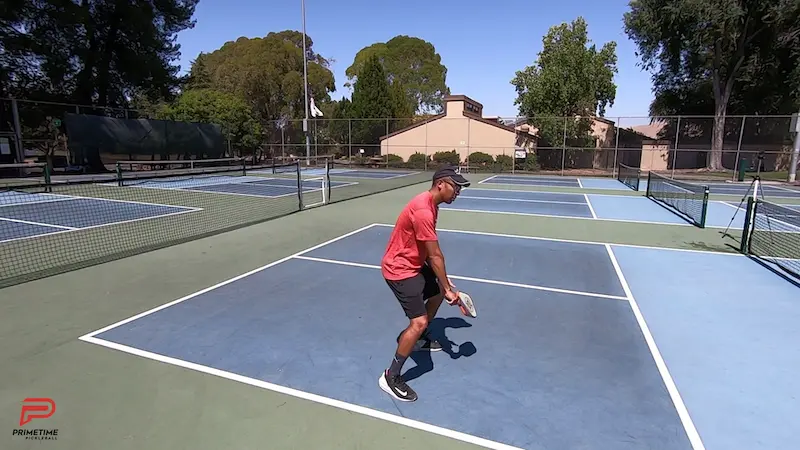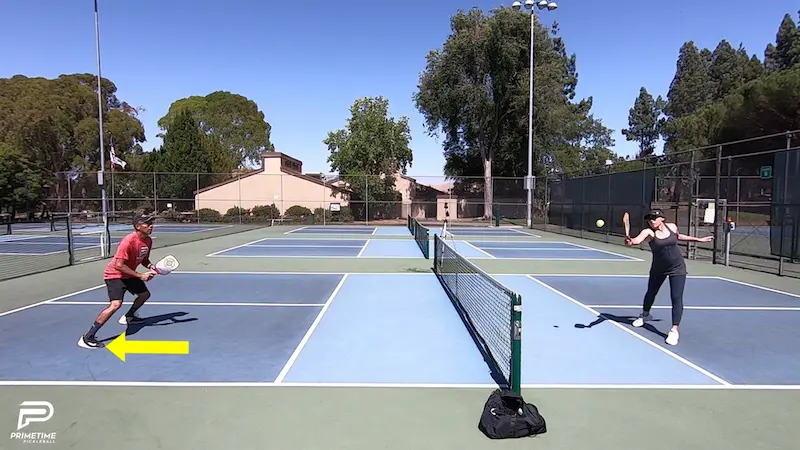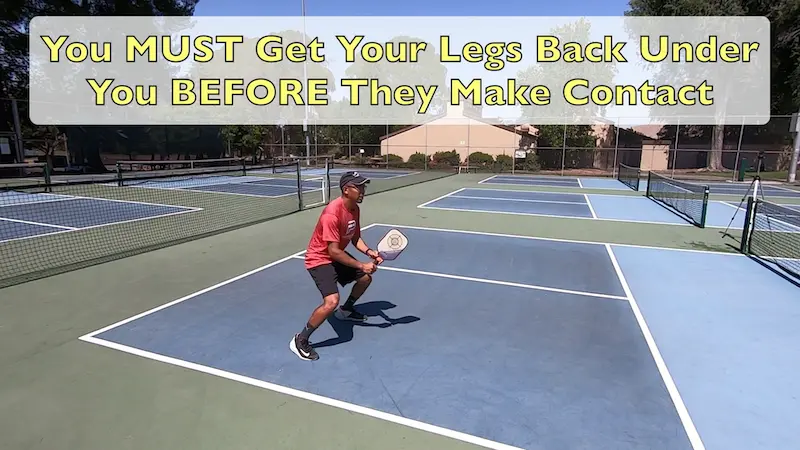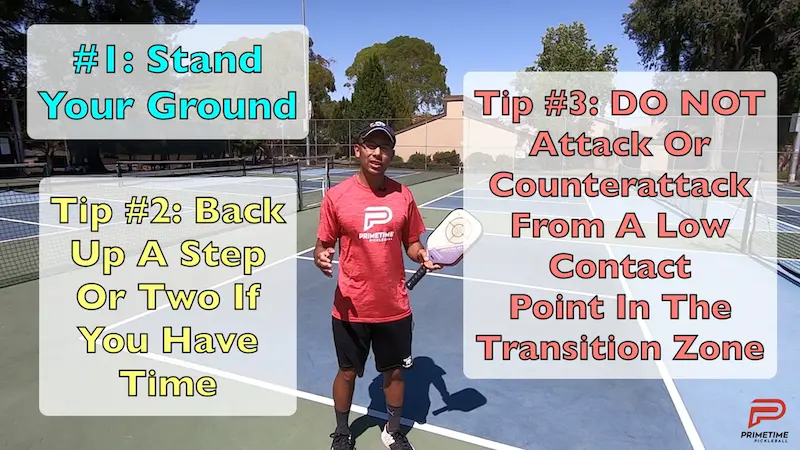In this blog we’re going to go over some tips that are going to help you stay in the point longer and in turn will help you win more points.
We’re going to give you three tips on how to defend well when you’re on the defense.
Here’s a scenario: You are headed from the baseline to the non-volley zone and you are transitioning, working your way to the net. Or, maybe you and your partner are at the net and your opponent are too. All four players are at the net. Your team is volleying and maybe one of you have popped up a ball and now you are on the defense. Your opponents have a ball that they can hit down on at your feet which they should do.
In this blog we’re going to give you three tips on that scenario and how to defend that well to keep you in the point so that you can stay in it and win more points.
Tip #1 – Stand Your Ground
Tip number one is stand your ground.
When you or your partner pops up a ball and you know that your opponents could hit down at your feet, one thing you need to do is just stay calm and relax.
You need to make sure you get low and stay low.
Another thing you need to do is drop your paddle down immediately.
A lot of people have their ready position where the paddle is up in front of them at about chest/upper abdomen height.
If your opponent is doing the right thing, they have a downward trajectory on that ball, they want to hit it at your feet.
One preparation tip that we have for you is to drop your paddle down to where they will be hitting.

Whether it’s on your backhand side or on your forehand side. We like to preferably kind of cheat on our backhand a little bit just because we know that we could block a lot more.
The main thing is you want to drop your paddle down, get low, stay low and stand your ground.
You’re going to dig a lot more balls out like this.
Tip #2 – Back Up A Step Or Two
The second tip we have for you is to back up a step or two if you have time after you get into your low ready position with your paddle down. If you can you should retreat a bit and come to a split step so that you can be ready to go.

This is something that can be super important.
Let’s say you see the ball pop up, you could come back even a step or two and that little extra movement will allow you to gain some reaction time. You will gain a lot of reaction time every foot or two that you move back.
One thing you don’t want to do is be backing up while the ball is already close to you, on your side of the court. You should not be backing up and hitting the ball at the same time. You’re not going to have control of that ball.

But, if you do foresee that ball and you know it’s popped up, go ahead and take a step back or two back and then come to a split step.
Let’s say you see your opponent kind of off balance and hitting the ball, you could come back a couple of steps and hit the split step and then you could just be ready to defend because you know that next ball is going to be tough.
Make sure that you are stationary not moving and if you have some time go ahead and take that step or two back. That’s going to give you more reaction time to get that ball over.
Tip #3 – DO NOT Attack Or Counterattack From A Low Contact Point In The Transition Zone
The third and final tip that we have for you guys is to make sure that you are not trying to hit an aggressive ball. Your whole goal, when you are on the defense, is to block and stay in the point.
When your opponent gets a pop up ball you know that they’re going to try to put that ball away at your feet.
You want to brace yourself, stand your ground, put your paddle down and just try to block the ball, preferably in to the kitchen, to force their contact point to be low instead of high.
When they’re on the offense, their goal is to keep hitting at your feet and get a higher and higher contact point so that they can really put the ball away.
If you could get just one block over the net and into the kitchen, it doesn’t even have to land in it, if you could just force them to have a lower contact point that next ball is going to be easier for you to handle.

Remember when you’re on the defense, you are not in attack mode, you’re just trying to block the ball.
Hopefully you can block it up and over to force them to have a low contact point and then you and your partner could then regain the net position.
We hope those three tips really helped you and they can help you in your games when you’re defending and that it keeps you in points longer.

Remember each ball you hit over and that allows you to stay in the point is going to put more pressure on your opponents and this way you’re going to win more points and win more matches.